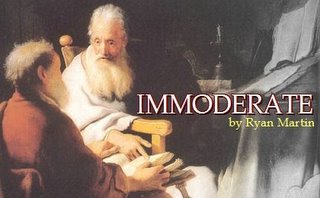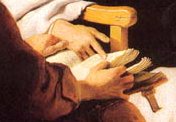Some Neil Postman for a Monday morning
from Amusing Ourselves to Death: Public Discourse in the Age of Show Business (New York: Viking Penguin, 1985), 8-9.
Interestingly, Ligon Duncan cites this paragraph in the book Give Praise to God
"The clearest way to see through a culture is to attend to its tools for conversation. I might add that my interest in this point of view was first stirred by a prophet far more formidable than McLuhan, more ancient than Plato. In studying the Bible as a young man, I found intimations of the idea that forms of media favor particular kinds of content and therefore are capable of taking command of a culture. I refer specifically to the Decalogue, the Second Commandment of which prohibits the Israelites from making concrete images of anything. "Thou shalt not make unto thee any graven image, any likeness of any thing that is in heaven above, or that is in the earth beneath, or that is in the water beneath the earth." I wondered then, as so many others have, as to why God of these people would have included instructions on how they were to symbolize, or not symbolize, their experience. It is a strange injunction to inlcude as part of an ethical system unless its author assumed a connetion between forms of human communication and the quality of a culture. We may hazard a guess that a people who are being asked to embrace an abstract, unverisal deity would be rendered unfit to do so by the habit of drawing pictures or making statues or depicting their ideas in any concrete, inconographic forms. The God of the Jews was to exist in the Word and through the Word, an unprecedented conception requiring the highest order of abstract thinking. Iconography thus became blasphemy so that a new kind of God could enter a culture. People like ourselves who are in the process of converting their culture from word-centered to image-centered might profit by reflecting on this Mosaic injunction."
Interestingly, Ligon Duncan cites this paragraph in the book Give Praise to God





0 Comments:
Post a Comment
<< Home